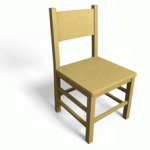 Our typical image of someone meditating is of a person sitting on the floor, with their legs twisted into a pretzel shape, with a faux-serene look on their face, disguising the inner agony.
Our typical image of someone meditating is of a person sitting on the floor, with their legs twisted into a pretzel shape, with a faux-serene look on their face, disguising the inner agony.
Fortunately, it doesn’t have to be that way!
Good posture is the key to both comfortable meditation and also staying awake during your meditation.
When I run my face-to-face classes for beginners, we bust the meditation posture myth by starting off on chairs. There are several reasons for this:
- Not everyone is comfortable sitting on the floor. If you are used to chairs, it can feel stiff and creaky, getting down on the floor. And some people struggle with getting back up.
- Having everyone on chairs makes meditating more accessible. It reduces judgement (of yourself and others), because pretty much everyone can sit on a chair.
- The goal of a long-term meditation and mindfulness habit is to be able to meditate effectively, any time, any place. If you only ever meditate on the floor, like a pixie, you’ll get anchored into that posture. This means that you can find it harder to meditate elsewhere.
Being flexible about how and where you meditate – accepting the external environment and factors beyond your control – is one of the keys to inner peace. If your ability to meditate is dependent on a certain sitting posture and location, it will slow down your progress.
That’s why I encourage people to learn how to meditate on a chair. Once you’ve got the process of meditation sussed, it’s easier to experiment with different locations and postures.
One thing I never recommend is sitting down on the floor, stressed out from your day, closing your eyes and expecting enlightenment to follow! Good meditation is also about good preparation – which we cover in detail as part of the 28 Day Meditation Challenge.
For the meantime, here are 5 things you need to know about meditating on a chair:
- You don’t need a special meditation chair.
In fact, I don’t recommend them. They’re rarely made to be adjustable enough for your personal physique. And there’s no such thing as an ‘average’ person. If you come across one that feels brilliantly comfortable and enables you to have good meditation posture, great! But don’t spend your time and money searching for one.
. - Don’t bother with an armchair.
Although it’s tempting to get really comfy when you meditate, a typical armchair is a bad friend to meditation posture. Remember what we said in the day 2 message, about your parasympathetic (relaxation) and sympathetic (fight or flight) nervous systems needing to be in balance, to be able to effectively meditate? Well, a comfy armchair encourages you to relax and slouch so much that your sympathetic nervous system switches onto standby mode and you’ll find yourself doing nodding-dog impressions, before you know it!
. - A dining chair is great.
Choose a chair with a firm base, which will help you sit upright and stay awake. You can add cushions to support your back. You can put the phone book under your feet so they don’t dangle (like mine!) or a cushion under your bottom so your knees aren’t pointing at the sky.
. - Your back doesn’t need to lean against the back of the chair.
The easiest way to balance your sympathetic and parasympathetic nervous systems is to sit up, without your back leaning on anything. For most of us, supporting our back with the back of a chair will cause us to lean backwards.
Sometimes, if our back muscles aren’t very strong or our day-to-day posture is in need of some loving attention, it helps to put a cushion between your back and the back of the chair. But very few people meditate well whilst leaning backwards.
. - It might feel funny!
If you’re used to meditating on the floor, it can feel strange meditating on a chair. But that’s ok. Just go with it for a week or so. Tweak your posture until you feel upright and comfortable. It’s worth the effort, because you can then get back into your meditation position (and be anchored into that sense of alert relaxation) any time you sit on a chair – even at work. Plus it does wonders for your posture.
If you’re used to slouching at the dinner table, then sitting upright on the chair can feel funny. Again, that’s ok. So there you have it – 5 things you need to know about meditating on a chair.
If you’re part of one of my online meditation classes or courses, please follow the prompts in the recordings at the start of each of your meditations. These are designed to help you to get comfortably into a relaxed, but alert, posture, each time.
Remember: good posture makes a huge difference to your meditation experience. It’s worth the practice. Any time you put into it now will pay dividends in the weeks, months and years ahead.
If you have questions about meditation posture or experiences you’d like to share, we’d love to hear from you via the comments box.

hi there
i have a question. i have started doing sitting meditation during my lunch time at work.
it is going well as i have found a very quiet place near my office. the problem is that i work in a very busy environment and even if once i am back from meditation am very very relax and i can feel my mind very relaxed it take only a couple of hours to get stressed agin
any advice what to do to maintain that feeling of calmness while still in the office?
thanks
Paolo